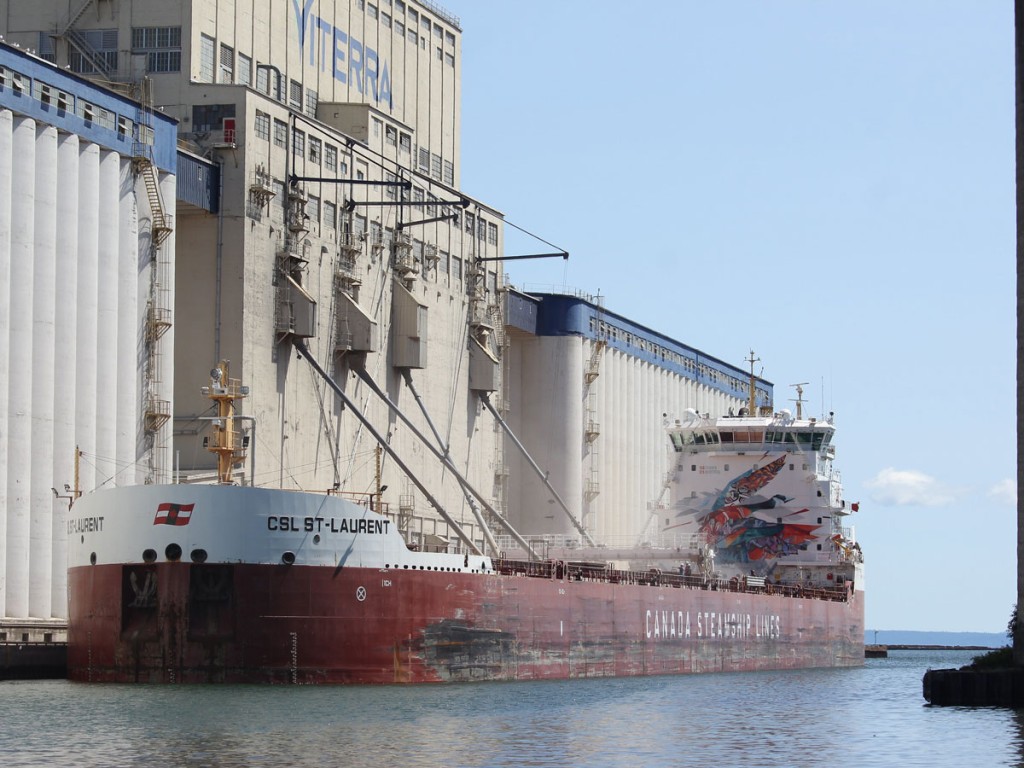Cargo volumes through the St. Lawrence Seaway and U.S. Great Lakes ports remained robust in September as ships delivered critical commodities and products without the delays or supply chain disruption seen in other trade gateways.
According to figures from the St. Lawrence Seaway, cargo volumes from March 22 to September 30 totaled 24.1 million metric tons, up 2.6% from the same time period in 2020.
Through September, stone (55.7%), cement (7%) and gypsum (18%) continued to increase, flowing between Canada and the U.S. via the Seaway to support building projects. Iron ore volumes also continued to increase, up 26%, partly due to Minnesota iron ore pellets heading to overseas markets. General cargo shipments, including steel, containers, aluminum and oversized project cargo, were also up nearly 60%.

“Our member ports and ship operators continued to transport a diverse mix of materials and products in September that are critical to the recovery of the American economy,” said Bruce Burrows, President and CEO of the Chamber of Marine Commerce. “In an era of global supply chain uncertainty, the Great Lakes-St. Lawrence Seaway system remains a reliable, congestion-free gateway for North American trade.”
Tonnage numbers at the Port of Cleveland far exceeded September levels in 2019 and 2020. A variety of general cargo, which included numerous forms of imported steel, rubber tire gantry cranes from Finland, and a multitude of containers, moved across the Port’s docks.
The containers arrived on the Peyton Lynn C, an 860 TEU (twenty-foot equivalent unit) container-only vessel on charter to Spliethoff for the next two years. This vessel has been added to the Cleveland-Europe Express service, which has expanded from two to three calls per month.
The Cleveland Bulk Terminal, which handles iron ore and limestone, also increased year over year in September; moving more tonnage through September 2021 than all of 2020. The Port also started the largest infrastructure project in its history. The $22 million project will rehabilitate and upgrade two of its main docks, while not disrupting cargo operations.
The Port of Toledo also posted strong tonnage numbers through September with more than 7.5 million tons already on the books. The Port is ahead in coal, dry bulk, general cargo and iron ore, while grain and liquid bulk are down slightly.
“Toledo is a very diverse port handling many different commodities, and, fortunately for us, most of those cargoes are outperforming 2020 levels so far this year,” said Joseph Cappel, VP of Business Development for the Toledo-Lucas County Port Authority. “While ports on the Great Lakes certainly have our challenges with labor shortages in the transportation sector, the impact of COVID, and other issues, the reliable Great Lakes-St. Lawrence Seaway System and the associated multi-modal supply chains that serve our ports appear to be faring relatively well, allowing our tonnage in Toledo to grow by more than 25% this year.”
North of Toledo, in Michigan, the Port of Monroe’s facilities were busy handling steel coils in September. The Port’s Turning Basin area has become a transshipment point, as an increased number of rail cars have been offloaded with coils on the port’s Turning Basin rail spur. The spur was built in 2019 and extends along the Turning Basin dock. The M/V Harvest Spirit called on the Port’s Riverfront Dock at the end of the month to discharge 654 steel coils.
The Great Lakes’ westernmost port, the Port of Duluth-Superior, moved more than 2.4 million short tons of iron ore in September; the season’s second highest monthly total. Overall tonnage topped 22.7 million, putting Duluth-Superior tonnage 37% ahead of last season’s pace and 3.4% above the five-season average.
Duluth-Superior’s grain tonnage also climbed in September, with nearly 92,000 short tons sailing from Twin Ports elevators, marking the season’s second-largest monthly grain dispatch thus far. Cement tonnage also proved to be a September highlight, as 38,560 short tons arrived in the port for construction and infrastructure projects.
“Demand drives tonnage, and on the Great Lakes, we’ve continued to meet that demand with skillful sailing, efficient cargo-handling and free-flowing landside connections,” said Deb DeLuca, executive director of the Duluth Seaway Port Authority. “It’s a team effort and we’re hoping for continued smooth sailing through the fall and winter months.”

Follow us on social media: